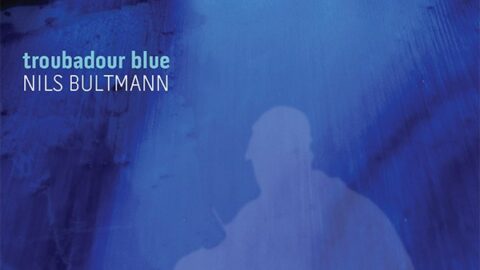
Often the viola is not thought of as a solo instrument. It is the connecting timbre between violin and cello, the warm, reedy middle layer that we crave in the orchestra whether we know it our not. Troubadour Blue is an album that revolves almost entirely around this overlooked instrument making it stand out against the cello suites and violin concerti. The composer of the album, as well as a violist, Nils Bultmann shines a favorable and fresh spotlight on his instrument and lends a welcome improvised voice to the composition scene.
Much of the album hovers along maintaining a gentle distance from the ground. Because of Bultmann’s improvised style it is as if meter is an afterthought that serves like the glue of a sticky note: it adheres when needed, but pulls off easily. Though all compositions start with some sort of improvisation by the composer, few capture the feel of that initial improvisation like Bultmann does.
The solo viola piece Lucid comes from a loosely structured improvisational work the composer would play as an opener at performances. The piece opens with an ever present drone that grounds the work while the improvised melody puts a folk-like taste in the listener’s mouth. As Nils moves through each segment he shows a technical command of the instrument, but not in a way that gives off the “showy” vibe. Rather, it is sensitive to where the music wants to go and necessary to the ideas of the piece.
Similarly, Ten Viola Duets pull out what seems to be every trick in the book playing out like a study in orchestrating for the viola. They show off not only the warmer (sometimes more haunting) timbral differences of the viola, but also the many effects that string instruments can perform. The treatment of these different techniques are not mearly put in as a novelty, but to truly effect the piece. They are treated in a motivic way, constantly reappearing, stretching, altering, and morphing. Though all ten duets are through-composed, they seem to recall each other through technical motives. Even the melancholy moods of the individual pieces ebb in and out of each other, going back and forth between jaunty frenzy and darker reflection.
The same could be said for Bultmann’s Suite for Solo Cello, an homage to Bach’s Cello Suite No. 1 in G Major. The movements pass back and forth between light and dark subject matter that makes the connections between the two seem easy and familiar. While not a direct reimagining of one of Bach’s most famous works, it does pull some harmonic and motivic material from it at times. Nils weaving of original ideas with older styles and sparse sourced material come together to make a warm blanket of music that is easy to listen to and made soft by the rich cello sound.
Perhaps one of the biggest highlights of the album is the edited down improvisation sets between Bultmann and didjeridu virtuoso Stephen Kent titled From the Depths. The fact that the didjeridu is finally making it’s way into contemporary classical music is refreshing to hear and magical when paired with the viola. By this point in the album Bultmann’s improvising is a bit more familiar to the listener than at the beginning of the album, but the sound of Kent’s didjeridu playing puts us back on unfamiliar ground. The percussive style he plays with gives a great drive and a primal sense of urgency. The interplay between the two players is what really makes these four movements special though. There is great rhythmic and dynamic interplay throughout. It’s like hearing two jazz players who know how to improvise together instead of try to play over each other.
Overall, this album is refreshing to hear. Violist everywhere should thank Nils Builtmann for revealing the full power and beauty of their instrument. After hearing Troubadour Blue I will never write the same way for viola again.
























